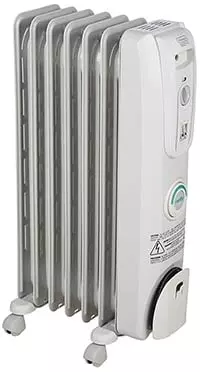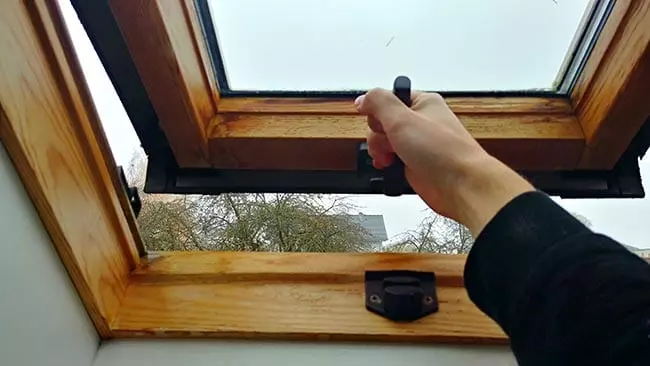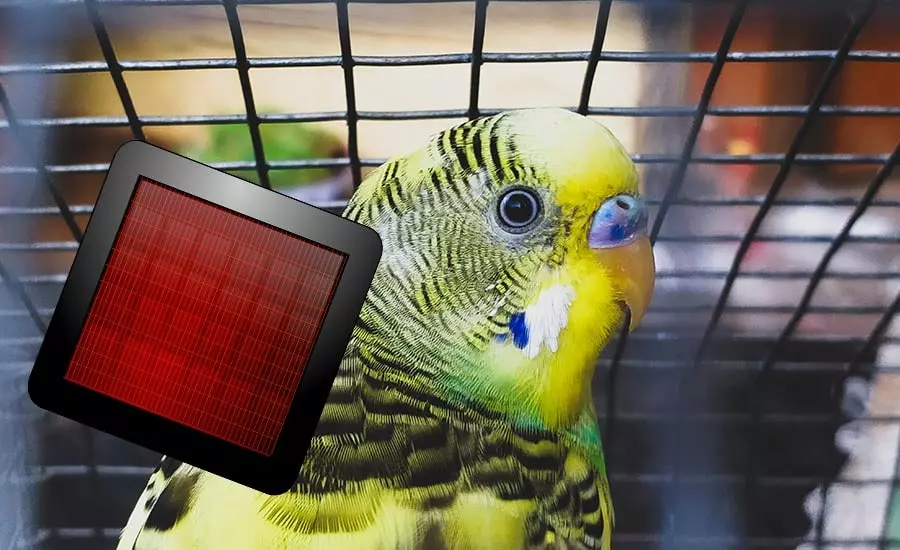What space heaters are safe for birds? This article contains everything you need to know to choose the right space heater for your bird as well as safety tips to make sure your bird stays happy.
After reading this, you’ll know exactly which kind of space heater you should get for your bird and I’ve even included an easy-to-follow guide that shows you exactly what to do with a new heater to bird-safe it.
Birds are really sensitive to heat and humidity. So, it’s great that you care enough for your pet to take the few extra steps and research before you buy a heater that could harm your bird.
Here’s the quick general answer for you:
Question: What space heaters are safe for birds?
Answer: Generally, oil-filled radiators are the best space heaters to use with birds. They don’t expose heating elements, are quiet and don’t light up. Additionally, they distribute the heat evenly and oftentimes come with a thermostat that regulates temperature. Also, oil-filled radiators don’t emit harmful gases after you’ve prepared them for your birds. Later on, I’ll show you how.
First off: Never use a space heater with exposed heating elements. Exposed heating elements can easily hurt your bird. A heater with exposed heating elements is never bird-safe!
Why you should never use gas heaters for birds
Birds are very sensitive to gases. As you might have already heard, back in the days coal-mine workers used birds to detect carbon monoxide. A dead bird was a sign of toxic gases and the workers knew to get out of the mine as quickly as possible.
That’s why you should never use gas heaters, propane heaters and kerosene heaters with birds.
When burning their fuel, they produce an increased amount of carbon monoxide and nitrogen dioxide - gases that are toxic and are dangerous for your bird.
Don’t use a gas heater for your bird.
Electric Space Heaters: Are they safe for birds?
Generally, electric space heaters are a much better choice as a heater for your birds.
The reason is that they use electricity to produce heat instead of chemical reactions. With chemical reactions, you can never be totally sure. At least our human nose can’t smell most of the bad gases.
Still, there’s one downside to electrical space heaters as well. It doesn’t apply to all of them, but some:
They have a nonstick coating that can emit gases. So, you either need to make sure you get a space heater without any coatings, or you get rid of the coating. You’ll learn more about this later on.
Here’s what bird experts say:
Electric space heaters are safe to use with birds, but according to the Bird Safety Corner
“You should NEVER run a new electric space heater around birds unless you are certain it does not have a nonstick coating on it.“
Bird Safety Corner by cafabirdclub.org
To get rid of the coating, you could, for example, leave the heater running on full heat for a few weeks for a few hours a day. This will get rid of a big part of the coating.
Some heater coils have a Teflon coating. This is, however, only dangerous if the heater gets too hot (just like with fry pans who shouldn’t overheat). A heater that doesn’t go over 400 degrees Fahrenheit should be safe even though it has a Teflon coating.
But: Some heaters use a so-called two-point controller. They are really cheap to produce because all they do is turn the heat on and off. These cheap on-off controllers could cause your space heater to get hotter than 400 degrees Fahrenheit and cause harmful gas emission.
Try to avoid such space heaters.
Instead, get a better-quality heater that has a built-in thermostat. Instead of switching full heat on and off, a thermostat balances the temperature evenly.
With a thermostat, the space heater is also less likely to overheat and much more energy-efficient. Such electric space heaters are safer to use.
Okay, so here’s what we need to look out for now:
- No coating (or burned off coating).
- Built-in thermostat.
If you already have an old electric space heater somewhere in your house, you can assume that this one is safe to use. Old space heaters either don’t have a coating at all or the coating is already burned off.
Oil-filled heaters
Oil-filled heaters oftentimes look like regular radiators. By heating the oil in its pipes, oil-filled radiators distribute heat evenly. Additionally, they have a big, wavy metal surface that distributes the heat.
Because of their shape, oil-filled heaters are not too hot to touch and they don’t emit gases.
Still, if you get a new heater, run it a few hours, because the paint could store gas that you want to get rid of first.
Unlike other heaters, oil-filled radiators don’t emit light. This means you can also use them at night without disturbing your bird’s sleep.

Our recommendation: Oil-filled space heaters are the safest choice for birds
Even though we have some more heaters to discuss, I’ll reveal our recommendation now.
For birds, oil-filled heaters are the best choice you can make.
You should get this heater for your bird:
Here’s why:
Oil-filled heaters don’t get too hot because their metal surface distributes the heat quickly. Still, they are able to evenly heat a room just like regular radiators.
Additionally, they are pet-safe and child-safe, because they don’t expose any heating elements. In contrast, other space heaters often have a protective metal grid that prevents you from touching the heating element. However, their protective metal grid gets really hot as well.
If you are concerned about your electric bill, you can stop worrying now: Even though they need 1.500 Watts of power like other heaters, they heat in a much more cost-effective way: More heat for less power.
Because oil-filled heaters are so massive, they retain their heat even when you shut them off. They don’t cool down instantly. That’s great if you want to keep your pet warm at night without leaving your heater running throughout the night.
Like other heaters, oil-filled radiators often have a built-in thermostat, overheat protection and auto shut off.
Ceramic Heaters
You can consider ceramic heaters as safe as well. They generate heat using a high-resistance ceramic heating element that can get really hot when electricity is applied to it. Metal parts then pull the heat out of the ceramic element and distribute it.
Because the main heating element consists of just ceramic, it emits very little or rather no gases at all.
Ceramic heaters don’t emit light, so it’s dark at night and your birds can rest.
I’d only get ceramic heaters if your birds are in a cage. The heating element can get burning hot which could hurt them, so you should keep ceramic heaters in a safe distance from your birds.
Also, ceramic heaters produce a really dry heat which might not be the best for your birds feathers.
We’ll cover a little about humidifying later, so keep reading.ve
Infrared Heaters
Infrared heaters are generally safe as well. But similar to ceramic heaters, you should only use them when your birds are in a cage.
Because these heaters can get hot to touch, oil-filled heaters are better for free-flying birds.
One thing I like about infrared heaters for birds is that you can point them at the birdcage and they’ll only heat the cage area instead of the entire room. Because of that, infrared heaters are pretty cost-effective.
Sadly they don’t retain the heat for long: As soon as you switch them off, your bird’s cage will be cold.
Additionally, infrared heaters emit light, so it will not be dark at night.
But: Unlike other heaters, infrared heaters are quiet because they don’t need a fan running to distribute heat.
What else to consider
To make sure your birds are happy, here are some points you need to consider:
- Air the room regularly
- Vent the heating system (only needed for oil-filled radiators) regularly to minimize carbon monoxide emission and maximize heating efficiency
- Install carbon monoxide detectors just to make sure your heater is safe
- Keep your room humid. Birds are sensitive to dry air. Especially tropical birds need humidity. A simple thing you can do to fix this issue is to get a humidifier (like this one (click me) on amazon).
- Make sure no coatings like Teflon are used in your heater.

How to bird-safe a new heater
Brand new heaters are not fully ready for your bird yet. There are some things you need to do to bird-safe them.
First, new heaters often have that “brand new electronics”-smell. If you recognize such a smell, your new bird heater needs some off-gassing first:
Take your heater to the garage or to your garden and run it for on full heat for about 3 hours. Do that every day for one week. This makes sure that most of the unwanted gases evaporate.
If you are using a heater that is not oil-filled:
Place your heater in one corner of the room and let it heat the room. Keep your birds in a cage. If you see that the birds show interest in the new heater, distract them with their favorite toys or other things they like.
You need to minimize the birds’ interest in the new heater to make sure they don’t burn themselves when they’re out of the cage. That’s why oil-filled heaters are generally the best choice for birds: They don’t get dangerously hot.
Don’t let your birds out until you think they’re used to the new heater in their room.
Can you leave your bird space heater on when you’re not home?
Generally, modern heaters don’t get hot enough to really damage something. They are equipped with auto-shutoff and overheating protection.
Still, I believe it’s best to leave the house with a peaceful mind rather than worrying all day about accidents that might happen in your absence.
Therefore, you should always shut off your heater when you’re not at home. Avoid the small chance that something goes wrong.
The Outline - What space heaters are safe for Birds?
For birds, oil-filled heaters are the very best choice. Use them together with a humidifier to make sure your birds feel good in the new environment.
If you liked this article, feel free to share it with your friends!
Also, check out the other heater guides!
